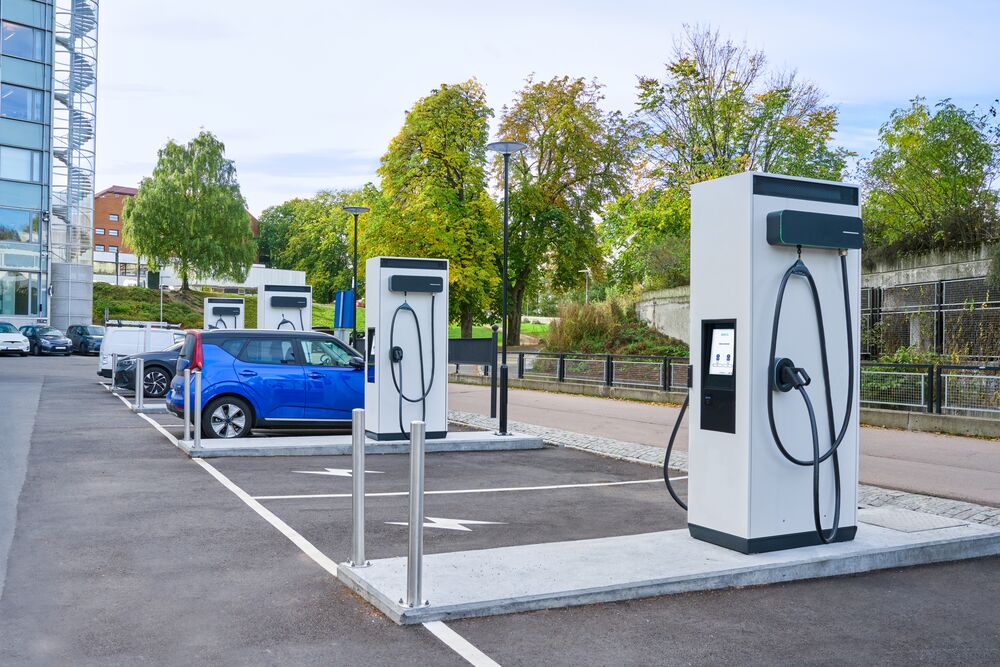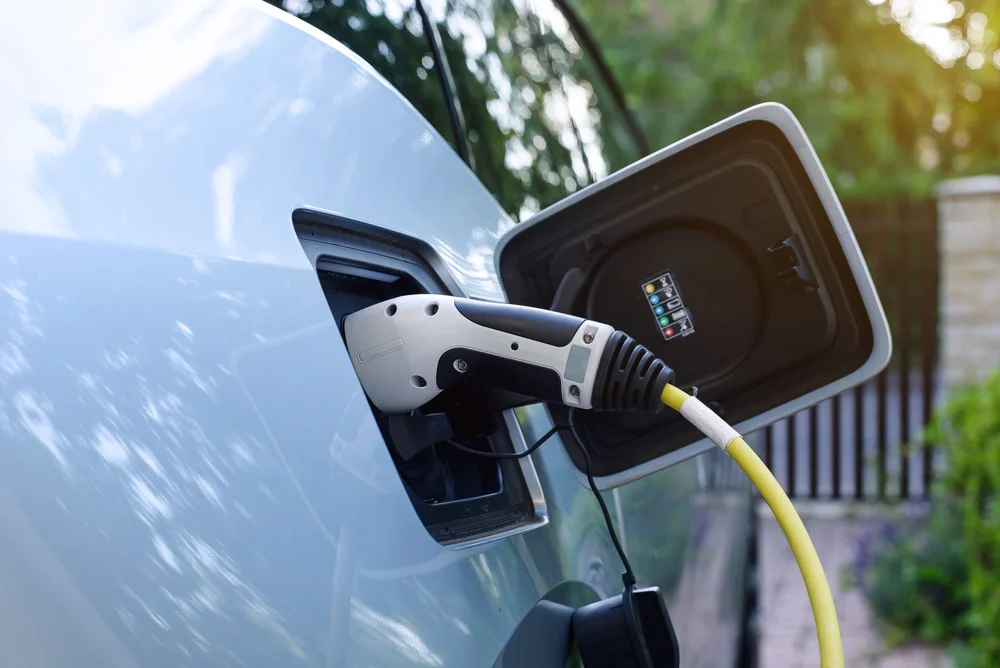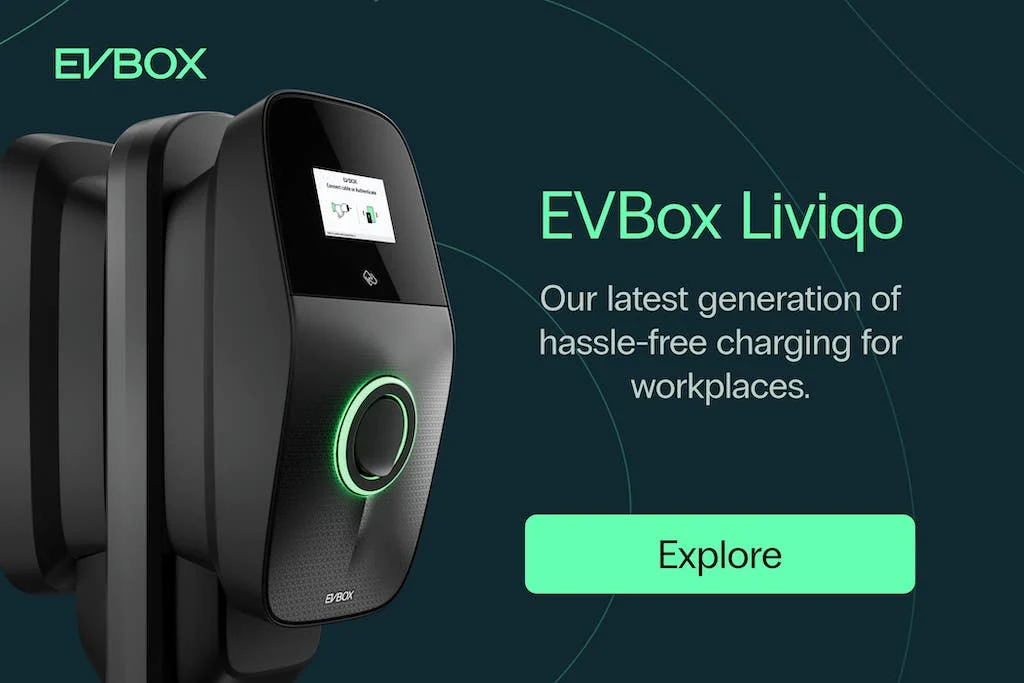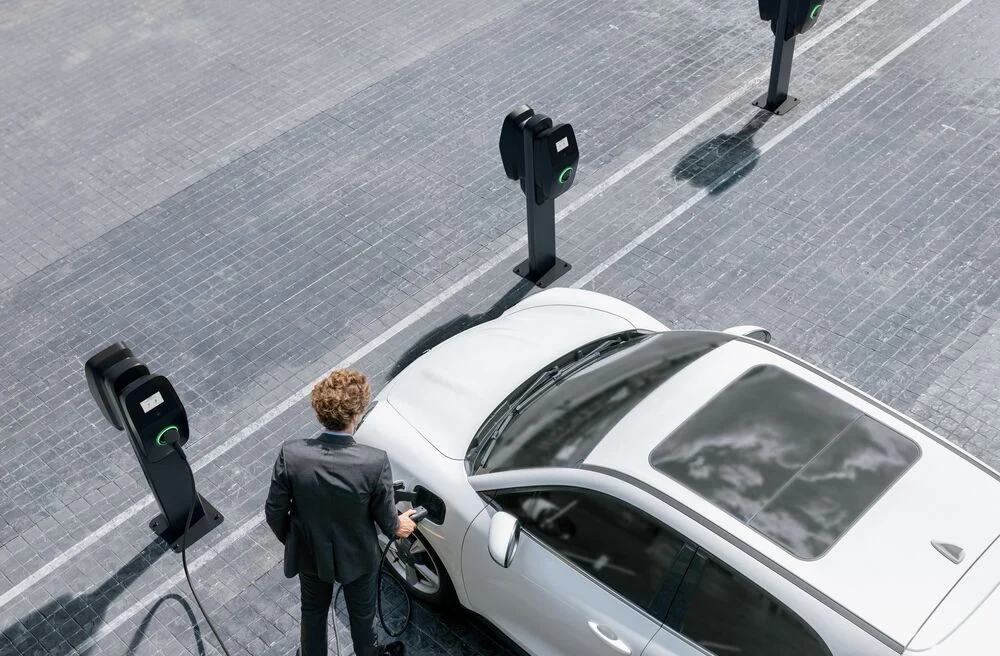The modern office faces new challenges
Today’s employees have more freedom than ever before, whether it's about where, how, or when they work. Companies must now compete not just for customers, but also for talent by offering compelling benefits beyond traditional perks like healthcare and salary.
Since the pandemic, retaining employees and bringing them back to the office has become a major challenge. Even as the situation improves, many employees have grown accustomed to remote work, creating a new reality that companies must adapt to.

Employees are increasingly looking for employers who take meaningful action on climate change. According to Gallup, 71% of employees consider a company's environmental impact when deciding whether to join. Moreover, those who feel their employer is making a positive difference are more likely to stay.
At the same time, electric mobility is playing a key role in building a sustainable future. The number of EVs on the road is rising rapidly, but the charging infrastructure hasn’t kept up. This creates a pressing need for more charging stations—especially in workplaces, where employees often spend long hours.
The total number of charging points in Europe is expected to jump from 3 million today to nearly 30 million by 2030, with workplace charging increasing from 10% to 15%. This shift highlights the importance of integrating EV charging into office environments.

Workplace charging is especially important for those without home charging options. Employees can charge slowly over the course of the day, making it a convenient and practical solution.
In this article, we’ll dive deeper into the evolution of the modern sustainable office, the reasons behind the growing investment in EV charging as an employee benefit, and how it helps companies walk the talk on sustainability.
More sustainable office spaces
Sustainability is no longer a nice-to-have—it's a must-have for many employees. With environmental issues affecting every corner of the world, people are demanding that their workplaces contribute to meaningful climate solutions.
According to surveys, 70% of millennials would prefer to work at a company with a strong sustainability agenda, and around 75% would even accept a smaller salary to work for an environmentally responsible company.

To meet these expectations, businesses are focusing on sustainability as a core part of their strategy. This goes beyond simply adopting electric mobility—it includes everything from energy efficiency to biodiversity and circular economy principles.
Certifications like BREEAM and LEED are becoming more common, offering tangible proof of a company's commitment to sustainability. These standards help ensure that buildings are not only environmentally friendly but also healthy and efficient places to work.
 Deloitte’s Edge in Amsterdam is a prime example. This energy-positive building produces more electricity than it consumes, uses rainwater for toilets and gardens, and integrates smart technologies to create flexible and intelligent workspaces. It holds the highest BREEAM score ever awarded to an office building.
Deloitte’s Edge in Amsterdam is a prime example. This energy-positive building produces more electricity than it consumes, uses rainwater for toilets and gardens, and integrates smart technologies to create flexible and intelligent workspaces. It holds the highest BREEAM score ever awarded to an office building.
Modern offices are also focusing on creating healthier and more sustainable indoor environments. From natural lighting to green spaces, these efforts not only reduce environmental impact but also improve employee well-being and productivity.
As we move further into a post-pandemic world, the integration of EV charging into office spaces will play an even bigger role in helping companies achieve their sustainability goals while boosting employee satisfaction.
Bring your employees back to the office
Working from the office used to be a given, but now it’s more of a privilege. Employees are only returning if the office meets their needs and expectations.
A 2023 report by the European Central Bank found that one-third of European employees still prefer more remote work. The main issue? Commuting. Workers who commute more than an hour each way want to work from home 10 days a month, compared to those with shorter commutes.

While there’s been some discussion about the benefits of commuting, it’s clear that it brings stress to many employees. The key is to make the office experience worth the commute.
By offering EV charging at your workplace, you give employees the option to charge their cars while they're at work. Even if they don't own an EV, it may encourage them to consider making the switch.
You can offer free or discounted charging to make it more appealing. While you can't eliminate all the stresses of commuting, you can certainly make the experience better.
More employees are driving electric vehicles

Even if you haven't made the switch yourself, many of your employees are. In recent years, both Europe and the U.S. have seen a significant increase in the number of electric cars on the road.
According to EY, by 2050, 65% of cars in the U.S. are expected to be electric, up from just 2% in 2020. Globally, electric vehicles are projected to account for 80% of the market by 2050.
This growth is driven by falling battery prices, increased range, lower fuel and maintenance costs, and government incentives.
As the EV market continues to grow, the chances that your employees are either considering or already driving an electric vehicle increases significantly.
Most EV drivers are full-time employees, have higher education levels, and earn a median household income of $150,000. One in three is under 35—a demographic that represents the top talent your business is trying to attract.
EV chargers can attract and retain top talent

In the competition for top talent, being green is a big advantage. Employees are looking for companies with strong environmental records.
EV charging is a great way to attract and retain talent because, despite the rapid growth of electric mobility, public charging infrastructure has not kept pace. Not everyone has access to home charging, so workplaces are becoming a popular alternative.
Charging at work is convenient. You plug in when you arrive and leave with a fully charged car, avoiding the stress of finding a public station later.
Offering this benefit can become a key part of your Employee Value Proposition (EVP), improving morale and showing your commitment to sustainability.

Businesses are electrifying their fleets
Business fleets are playing a crucial role in the transition to electric mobility. With two-thirds of new cars in Europe purchased by private companies, businesses have the power to shape the future of the EV market.
According to EY, fleet electrification should lead the way in reducing emissions from road transport. This presents a huge opportunity for companies to get ahead in the electric mobility ecosystem.

Many large companies have already announced plans to go electric, including Amazon, Walmart, General Motors, and FedEx. As more employees gain experience with electric vehicles through company fleets, this “new normal†will influence attitudes and expectations.
By purchasing EVs early, businesses can drive economies of scale, making electric vehicles more affordable for everyone.
One of the key factors in this transition is charging infrastructure. According to McKinsey, Europe needs 3.4 million charging stations by 2030 to support its fully electrified fleet. By 2030, the number of charging points is expected to jump from 3 million to nearly 30 million.
In the U.S., President Biden has allocated $7.5 billion for EV charging infrastructure to support the growing demand.
As this shift continues, charging stations will become a defining factor in how employees interact with electric mobility. Making them accessible is not only good for the environment—it’s also good for business.
EV chargers boost your office’s reputation

Whether you’re an owner-occupier, real estate agent, or office leaser, EV charging can enhance your office’s reputation as a forward-thinking and sustainable workplace.
EV chargers are visually noticeable, and anyone passing by your parking lot will see them. Whether your employees or customers drive EVs, they’ll take notice. Six out of ten people say reducing CO2 emissions in transportation is important to them, and 88% of customers want organizations to help improve their environmental and social footprint.
Offering charging facilities shows your company is taking action on sustainability. It’s a visible and impactful way to demonstrate your commitment, even if it’s just one piece of a larger puzzle.
EV chargers can increase your facility’s revenue
For forward-thinking businesses and facility managers, adding EV chargers isn’t just about sustainability or reputation—it can also be a source of new revenue.
Many real estate companies are generating additional income through EV charging. By offering public charging, you can increase your existing revenue and attract new customers.
With innovative charging technology, you can control access, set pricing, and even offer management platforms tailored to different user needs.

You could implement a flat rate for all users or use a tiered approach, offering discounts to office workers. Additionally, having EV charging stations can increase your visibility on maps like Google Maps or Waze, helping you attract more visitors and potential customers.
“Clear leadership and collaboration seem key to ensuring all is done to effectively tackle the net zero carbon challenge,†states the Future Workplaces Report 2022. “The climate emergency is a global emergency, and we all have a duty to do what we can.â€
Read more about workplace EV charging
The benefits of equipping your workplace with EV charging stations and offering electric business cars to your employees are numerous. But did you know that EV charging can also attract customers or generate revenue? Take a look at our free guide to discover how workplace EV charging goes beyond just improving employee satisfaction.










